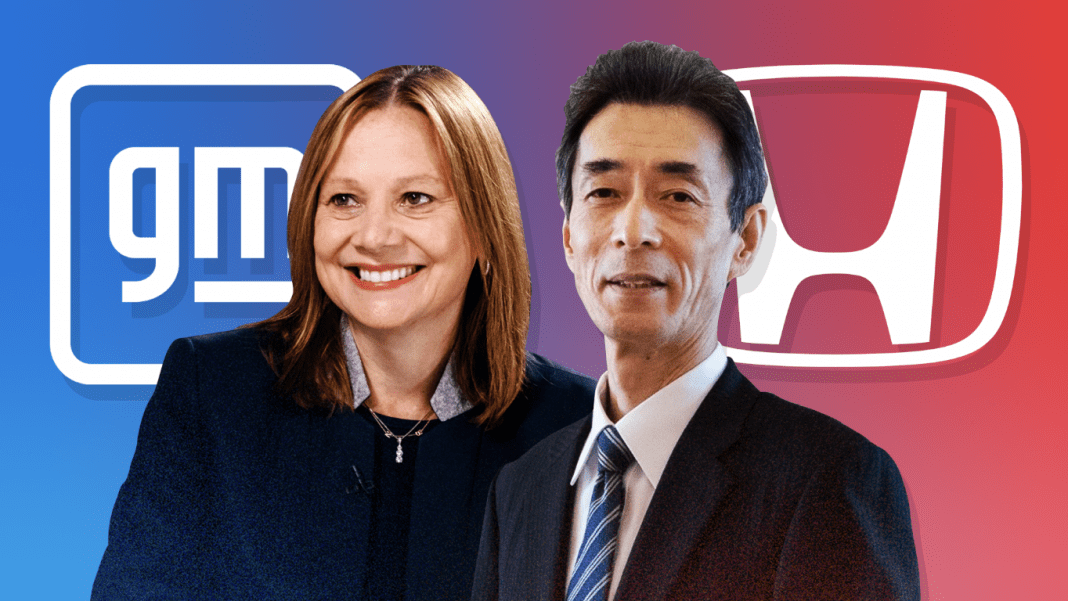On Tuesday, April 5, General Motors and Honda announced a joint project to develop electric vehicles centered around the Ultium battery platform. The partnership is expected to produce mass volume affordable EVs for the global market.
By joining in this effort, the two carmakers expect to produce “millions of EVs starting in 2027”, specifically targeting popular segments like the compact crossover SUV market. Synergies will allow for lower costs, better efficiency in production, and high quality.
GM Chair and CEO Mary Barra said in the news release, “GM and Honda will share our best technology, design, and manufacturing strategies to deliver affordable and desirable EVs on a global scale, including our key markets in North America, South America, and China. This is a key step to deliver on our commitment to achieve carbon neutrality in our global products and operations by 2040 and eliminate tailpipe emissions from light-duty vehicles in the U.S. by 2035. By working together, we’ll put people all over the world into EVs faster than either company could achieve on its own.”
It’s a huge step for Honda in its electrification goals. The brand, though known globally for efficiency, has appeared to lag behind the competition in a transition to fully electric. The Honda Prologue is set to be released for the 2024 model year, and it would be Honda’s first high-volume EV. Incidentally, it’s based on GM’s Ultium platform.
Big step for Honda EVs
American Honda Motor Co Executive VP, Corporate Services Rick Schostek said in a separate communication that “Honda is already developing electric vehicles using our own Honda e:Architecture and they are in the pipeline”. The joint project with GM appears to be supplemental rather than a replacement for Honda’s current EV plans.
In the announcement, Honda president and CEO Toshihiro Mibe said, “Honda is committed to reaching our goal of carbon neutrality on a global basis by 2050, which requires driving down the cost of electric vehicles to make EV ownership possible for the greatest number of customers. Honda and GM will build on our successful technology collaboration to help achieve a dramatic expansion in the sales of electric vehicles.”
Although Honda has explored partnerships for battery development in recent months, no concrete plans have been announced. This critical component of the EV manufacturing process is likely the main factor in pairing up with GM, otherwise achieving high-volume production is an insurmountable task. It furthers an agreement between Honda and GM from 2018, at the time vaguely called a “,multi-year agreement” for a next-generation battery.
“The progress we have made with GM since we announced the EV battery development collaboration in 2018, followed by co-development of electric vehicles including the Honda Prologue, has demonstrated the win-win relationship that can create new value for our customers,” said Shinji Aoyama, Honda senior managing executive officer. “This new series of affordable EVs will build on this relationship by leveraging our strength in the development and production of high quality, compact class vehicles.”
Affordable compact crossover plans for both companies
Both GM and Honda seem to be targeting the highly competitive compact crossover SUV market with this partnership. Honda’s Rick Schostek would not indicate where the model would slot in with their lineup, but GM’s executive vice president of Global Product Development, Purchasing and Supply Chain Doug Parks gave a glimpse. He said,
“Our collaboration with Honda and the continuing development of Ultium are the foundation of this project, utilizing our global scale to enable a lower cost foundation for this new series of EVs for millions of customers. Our plans include a new all-electric product for North America positioned at a price point lower than the upcoming Chevrolet Equinox EV, building on the 2 million units of EV capacity the company plans to install by the end of 2025.”
Did you enjoy this article from Jason Unrau? Read other articles on CBT News here. Please share your thoughts, comments, or questions regarding this topic by submitting a letter to the editor here, or connect with us at newsroom@cbtnews.com.
Be sure to follow us on Facebook and Twitter to stay up to date or catch up on all of our podcasts on demand.
While you’re here, don’t forget to subscribe to our email newsletter for all the latest auto industry news from CBT News.










